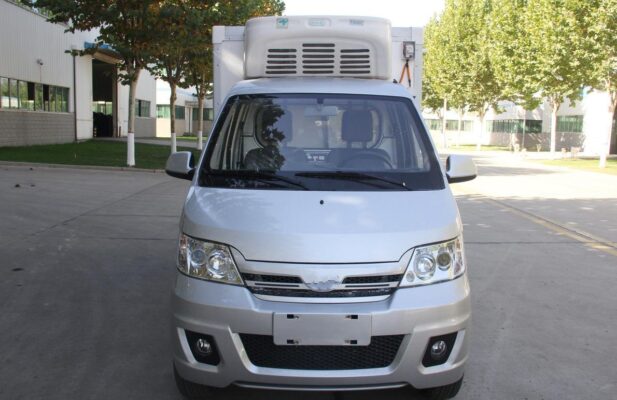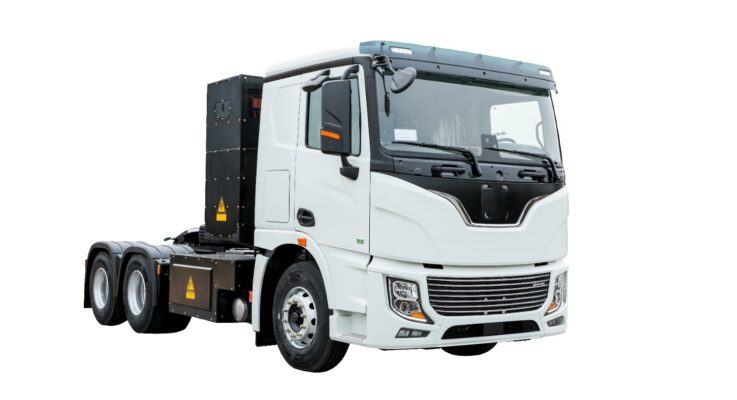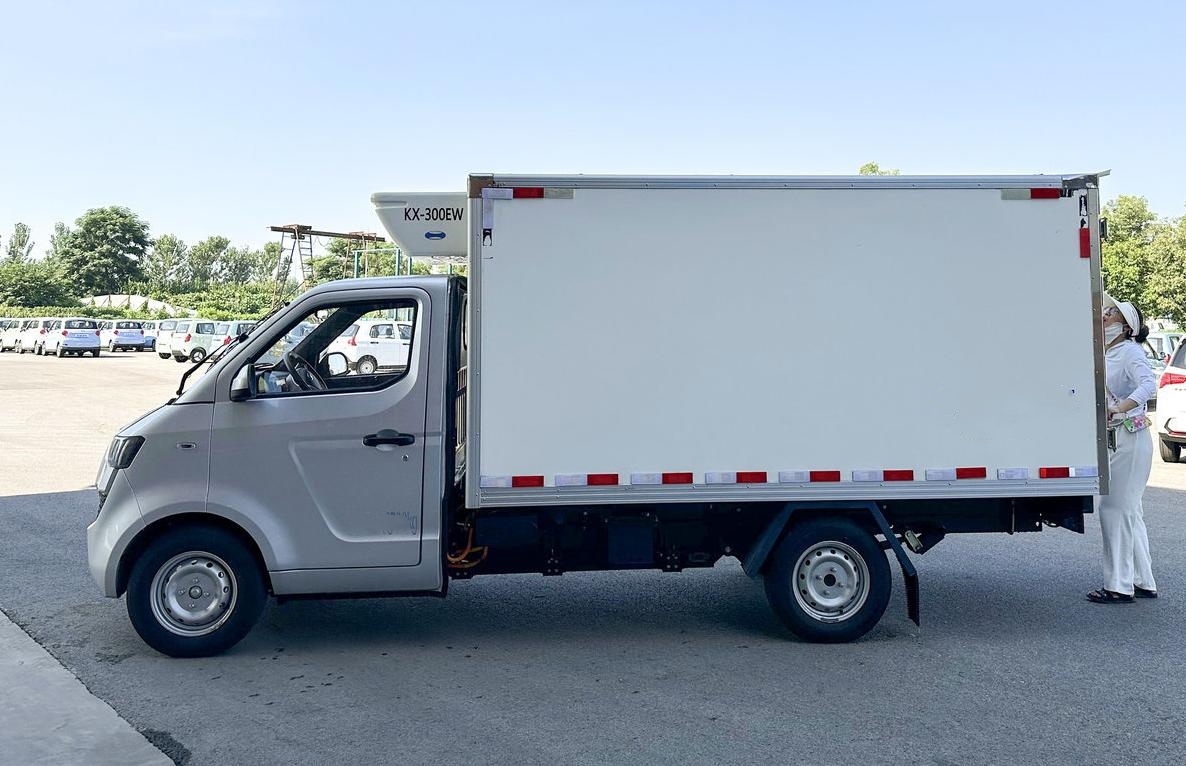Wararka Gawaarida korantada korantada
Muxuu roobka culus u saameeyaa gawaarida korantada?
Dhajiyay ag Gawaarida korantada
Sanadihii ugu dambeeyay, gaari korontos have gained significant popularity due to their environmental – friendly nature and advanced technology. Hase yeeshee, they are not without vulnerabilities, especially when it comes to heavy rain. The impact of heavy rain on gaari korontos is a complex issue that encompasses multiple aspects of the vehicle’s functionality and safety.

What impact will heavy rain have on the batteries of electric vehicles?
Batteriga waa wadnaha a gaari koronto, and heavy rain poses several risks to it. Marka hore, heavy rain can increase the likelihood of the battery system getting damp or being flooded. In an gaari koronto, the battery is often located in a specific compartment within the vehicle chassis. Hase yeeshee, water can seep in through various openings or gaps, especially if the vehicle is driven through deep puddles or is exposed to heavy rain for an extended period.
When the battery gets damp, it can lead to a decrease in performance. The chemical reactions within the battery that are responsible for storing and releasing electrical energy can be disrupted. Tusaale ahaan, moisture can cause corrosion on the battery terminals or other internal components. Corrosion can increase the electrical resistance, reducing the efficiency of the battery in both charging and discharging processes. This means that the vehicle may not be able to travel as far on a single charge as it normally would, or it may take longer to charge.
In more severe cases, if the battery is flooded, it can lead to a complete failure. The water can short – circuit the battery cells, which is extremely dangerous. A short – circuit can cause overheating, which not only damages the battery irreparably but also poses a significant fire risk. Intaa waxaa sii dheer, water ingress can damage the battery management system (Bs), which is crucial for monitoring and controlling the battery’s state of charge, heer kuleyl, and overall health. If the BMS is affected, it may not be able to accurately manage the battery, leading to further performance degradation and potential safety hazards.

What impact will heavy rain have on the electric control system of electric vehicles?
The electric control system is the brain of an gaari koronto, dictating how the vehicle operates. Heavy rain can be a major threat to this system. When rainwater enters the vehicle, it may find its way to the electric control system components, causing them to get damp or be flooded.
The electric control system consists of various electronic components such as controllers, dareen, and wiring harnesses. These components are designed to operate within specific environmental conditions, and moisture can disrupt their normal functioning. Tusaale ahaan, if water gets into a sensor, it can cause inaccurate readings. This can have a domino effect on the entire vehicle operation. Tusaale ahaan, if the speed sensor gives incorrect readings due to water damage, the vehicle’s speed control may be affected, leading to erratic driving behavior.
Waqti badan, water can cause short – circuits in the wiring harnesses or damage the printed circuit boards (PCBs) within the controllers. A short – circuit can cause components to overheat and fail. If the main controller that manages the power distribution and motor operation is affected, the vehicle may not be able to operate normally. It could result in a loss of power, sudden shutdowns, or the inability to start the vehicle at all.

What impact will heavy rain have on the drive system of electric vehicles?
The drive system of an gaari koronto is one of its core elements, responsible for converting electrical energy into mechanical motion. Heavy rain can have a significant impact on this system as well. Similar to the battery and electric control system, the drive system can get damp or be flooded.
The electric motor, which is a key part of the drive system, is vulnerable to water damage. Water can enter the motor housing through small gaps or seals. Once inside, it can cause problems such as corrosion of the motor windings. Corrosion can reduce the conductivity of the windings, leading to a decrease in motor efficiency. This means that the motor may not be able to generate the same amount of torque as it should, resulting in reduced acceleration and overall performance.
Intaa waxaa dheer, the transmission components in the drive system, such as gears and shafts, can also be affected by water. Water can wash away lubricants, increasing friction and wear. This can lead to premature failure of these components, causing the drive system to malfunction. If the drive system fails, the vehicle will be unable to drive normally, leaving the driver stranded.

What impact will heavy rain have on the body structure of electric vehicles?
The body structure of an gaari koronto plays a crucial role in protecting the internal components from the external environment. Heavy rain tests the sealing performance of the body structure. If the body structure is not sealed tightly, rainwater can enter the vehicle.
When rainwater enters the vehicle through body gaps or poorly sealed areas, it can directly affect the normal operation of various components inside. Tusaale ahaan, water can drip onto electrical components, causing them to malfunction. It can also cause rust and corrosion on metal parts over time. Intaa waxaa dheer, a wet interior can lead to a musty smell and potential mold growth, which is not only unpleasant but also a health hazard.
Waqti badan, a poorly sealed body structure can also affect the aerodynamics of the vehicle. Rainwater can create additional drag, reducing the vehicle’s efficiency. This can further impact the overall performance of the gaari koronto, especially in terms of range and energy consumption.

What impact will heavy rain have on the charging equipment of electric vehicles?
Charging equipment is essential for gaari korontos, and heavy rain can pose problems for it as well. The electrical components of the charging equipment are sensitive to moisture. Heavy rain may cause these components to get damp or be flooded.
When the electrical components of the charging equipment are affected by water, their normal operation is disrupted. Tusaale ahaan, the power conversion circuits within the charger may malfunction. This can lead to a decrease in the charging speed of the gaari koronto. In more severe cases, if the water causes a short – circuit in the charging equipment, it may be unable to charge the vehicle at all.

Ee dib sii dheer, if the charging port on the vehicle or the charging cable gets wet, it can also create safety hazards. There is a risk of electrical shock when connecting or disconnecting the charger in wet conditions. This not only endangers the user but also can damage the vehicle’s electrical system.
Gunaanad, the impact of heavy rain on gaari korontos is extensive and multi – faceted. It can affect various aspects such as the battery, electric control system, Nidaamka wadista, body structure, and charging equipment. These impacts can range from a decrease in performance to complete failure of the vehicle or its components, and can even lead to potential safety hazards. In heavy rain weather, especially in torrential rain, it is of utmost importance to pay attention to protecting all parts of gaari korontos. This may involve taking precautions such as parking in covered areas, ensuring proper sealing of vehicle components, and using waterproof covers for charging equipment when possible. Adigoo sidaas samaynaya, the normal operation and safe use of gaari korontos can be ensured.
